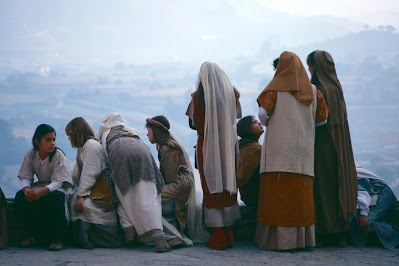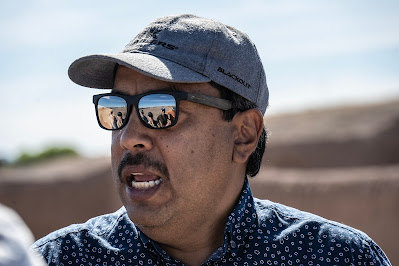I recently bought a slide scanner (Plustek 8200i for anyone interested) and I’m digitizing old slides before they succumb to dust and time. I’ll post some of these from time to time as I work through the boxes that have been stacked in storage for decades.
In the fall of 1996, Ellen and I, not yet married, headed to Spain for two months to sport climb. In those days, trips were planned around hard-copy guidebooks and guesswork rather than the still nascent internet. Netscape, the main browser option, had gone public only the year before, and a Time Magazine article on “the best websites of ‘96” lauded the "innovative" Amazon.com where you could “search for books by title, subject, or author” (!!) according to an old Slate.com article. Thankfully, there were no “instagrammable” places on the world travel circuit. AOL was the go-to service for email, not that it mattered since we didn’t have cell phones, let alone smart phones while traveling, and we still sent hand-written post cards to friends and family. I shot slides on the trip with a new Nikon SLR that I was still learning to use, hoping my 35 mm slide film would survive the airport x-ray machines. I noted in my journal that on the plane I thumbed excitedly through Let’s Go Spain while sipping Bailey’s from a plastic cup, hoping to get some sleep. I probably even had a little leg room.
Unlike the internet, sport climbing was well-established in Spain in the 1990s, and we eagerly launched into our tour of Spanish climbing areas, working our way from the Pyrenees (Montgrony) in the north to El Chorro in the south before taking a ferry to Mallorca for an anticipated grand finale, only to be soaked there by pouring rain through which we walked wistfully above amazing limestone cliffs where deep water soloing (climbing without ropes above the sea) had already gained a following. Along the way, we visited Siurana, Montserrat, Villanova de Meia, Cuenca, and other crags, taking days off to rest only when our younger bodies insisted or when it rained, which was not infrequently. The rain, at least that autumn, did not fall mainly on the plain.
It was on rest days that I engaged in photographing Spain--with mixed success. Other days I was too focused on climbing to even try to take good pictures. While “resting,” we wandered through villages, stopping to sip coffee in Spanish cafes, or we explored famous sites like the Alhambra in Granada, wishing that we had the means to stay at the pricey hotel there rather than in our tent outside of town. I snapped pictures of cathedrals, landscapes, and local people, stimulated by unfamiliarity. With film, you didn't really know how your pictures would turn out until you had them processed months later.
I kept a journal for part of the trip. A few excerpts give a taste of what travel was like for us then. We were much more spontaneous than we are now with no set itinerary, and while much of our time was spent climbing, most of my journal writing describes the days when we weren’t.
7 October 1996. Siurana.
We took showers last night in the climber’s “refugio,” a stone building literally built around a limestone boulder such that there is a significant bouldering traverse in the dining room. In our camp, a huge tent-load of Spaniards is camped semi-permanently, and they stay up late laughing with pure delight. It makes me smile just to listen to them, even though I can’t understand their jokes.
12 October. Artesa de Segre, Villanova de Meia, Lleida.
The grocery store, which was sort of like a combination of a Walmart and a Safeway, had an entire row of pig parts hanging from a rail. Apparently, they chop off the pig’s leg and a substantial part of the ham, dip the whole thing in wax to preserve it (though it didn’t smell that preserved), and then send it off to the supermercado. I saw one woman, presumably local, take a whiff of one of the pig legs and then wrinkle up her nose.
13 October. Villanova de Meia.
It is always somewhat strange to be trapped by rain on a trip when you are camping. We sat in the car for a while eating Lu cookies and surfing Spanish radio stations. Eventually when the rain let up, I went for a walk but got caught in a shower and hid out in a goat cave—full of goat shit. Ellen hung out in the tent and chopped veggies for dinner.
17 October. Montserrat.
We washed our dinner dishes tonight and stretched while gazing out at the lights of Barcelona and the view towards the Med, enjoying the quiet that returns after the daily throng of tourists (mostly German) have left. The monastery is a peaceful and beautiful place. We climbed a couple of routes this afternoon on a rock called the “Vomitada,” named presumably for the stink coming from a pipe spewing raw sewage from the monastic complex above into the drainage below. Pretty foul. I guess even the most peaceful places have their effluent.
20 October. Montgrony.
We somehow became entangled in a big local climbers’ rendezvous here today and were included in the “historica” group photo on a hillside above the monastery, with much rushing around by the photographer and much saying of the Catalan equivalent (but not the direct translation) of “cheese.”
27 October. Cuenca.
We climbed yesterday in the Sector Alfar [maybe -- can't quite read my handwriting] and got typically spanked. Although there is much steep rock here, we jumped on some recommended 7a (5.11d) routes that turned out to be hard, slabby, and quite sporty. One is regularly faced with crux moves on dicey thin edges with last bolt several feet below your quaking shoes and the next one a hard move or two out of reach. Miraculously, I avoided taking any huge falls…
5 November. El Chorro.
The south of Spain is an almost continuous blanket of neatly spaced olive trees, but as we came down out of the mountains toward the coast, we began to see orchards of citrus trees—oranges, limes, and lemons. At one place a grower was pruning his fruit trees and tossing the branches down the hill to a herd of eager goats who set upon the branches with gusto, eating the green leaves which must seem luxurious in an otherwise dry landscape.
After that entry, my journal inexplicably stops, and I can’t remember why. Ellen was suffering from a stomach malaise that we thought might be giardia, but we were still climbing hard most days, and we soon headed to Mallorca where we thankfully stayed in a cheap rented apartment while it rained fiercely for much of the time before we flew home.
Trips for us today are less spontaneous and more expensive than they were in 1996, partly because we have the means not to camp in the rain, partly because we have the internet, and partly because it’s harder now to show up somewhere and expect to find a place to sleep. But something is lost when itineraries lock you into a schedule, preventing you from following your whims or the random recommendations of strangers, and the internet makes it a little too easy to know what you’ll find when you get there. Still, travel is exciting and invigorating. I usually take my best pictures when I’m in unfamiliar places. Mark Twain famously said, “Travel is fatal to prejudice, bigotry, and narrow-mindedness, and many of our people need it sorely on these accounts.Broad, wholesome, charitable views of men and things cannot be acquired by vegetating in one little corner of the earth all one’s lifetime” (from The Innocents Abroad: Roughing It, published in 1869). This is perhaps even truer today than it was in 1869, or 1996.





















































